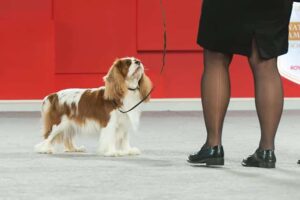
Cavalier Movement
Explore the essence of Cavalier movement—a vital aspect often overlooked. Delve into its significance and impact on structure.
Home » Dog Breeds » Cavalier King Charles Spaniel Dog Breed
ALLAN REZNIK
03/07/2024
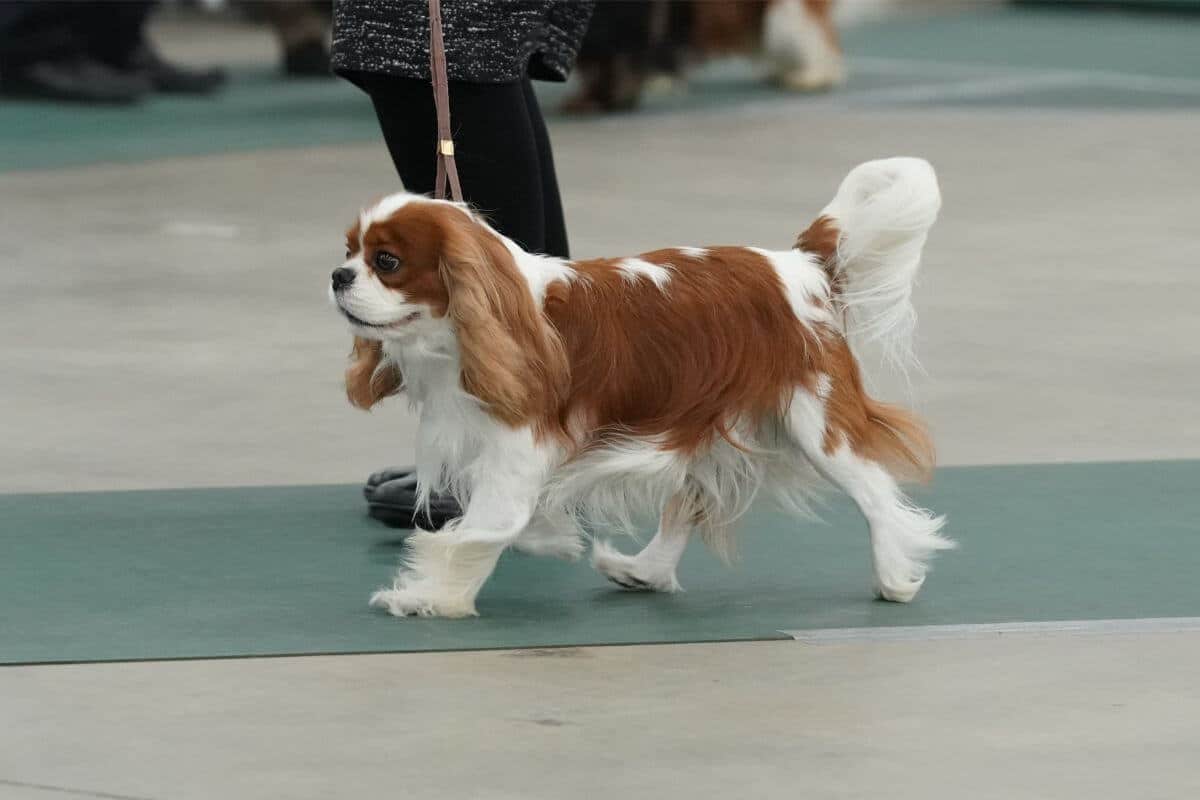

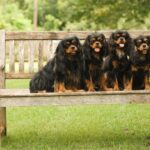

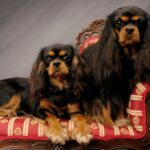
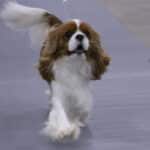
The Cavalier King Charles Spaniel (correctly shortened to “Cavalier,” not “King Charles”) is a graceful, active, well-balanced toy spaniel, gay and free in action, fearless and sporting in nature, yet at the same time gentle and affectionate. It is this typical happy and carefree temperament, combined with true elegance and royal appearance which are of paramount importance in the breed. Natural appearance with no trimming, sculpting or artificial alteration is essential to breed type.
Toy Group
12 – 13 inches
13 – 18 pounds
12 – 15 years
| Country of Origin | England |
|---|---|
| Bred For | Companionship |
| Known For | Sweet Nature, Elegant Appearance, Desire to Please |
| Popularity | High |
| Temperament | Happy, friendly, non-aggressive, with no tendency towards nervousness or shyness. |
| Activities | Dog Shows, Obedience, Agility, Rally, Walking |
Today’s Cavalier is descended from the small toy spaniels seen in so many paintings of the 16th, 17th, and 18th centuries by Titian, Van Dyck, Lely, Stubbs, Gainsborough, Reynolds, and Romney. These paintings depict small spaniels with flat heads, high-set ears, almond eyes, and rather pointed noses. During Tudor times, toy spaniels were quite common as ladies’ pets, and under the Stuarts they were given the royal title of King Charles Spaniels. King Charles II was seldom seen without two or three toy spaniels at his heels. So fond was he of his little dogs that he wrote a decree that the King Charles Spaniel should be accepted in any public place, even in the Houses of Parliament, where animals were not usually allowed. This decree is still in existence today in England. As time went by, and with the coming of the Dutch court, toy spaniels went out of fashion and were replaced in popularity by the Pug. In time, the moderate toy spaniels of the past gave way to dogs with a completely flat face, undershot jaw, domed skull with long, low-set ears and large, round, frontal eyes associated with the modern English Toy Spaniel (as it is known in North America; King Charles Spaniel everywhere else in the world).
In the mid-1920s, an American, Roswell Eldredge, went to England in search of the old type spaniels with the moderate face and muzzle that he saw in the paintings by the masters. Disappointed to hear those dogs were extinct, he offered a prize of 25 pounds at Crufts, the world-famous dog show, to the first breeder who succeeded in recreating the old type “nosey” spaniels that were favored by King Charles II. In 1927 a dog named Ann’s Son was declared the winner of Eldredge’s money prize, and in 1928 a Breed Standard was drawn up using Ann’s Son as the model.
The first Cavaliers were sent to America in 1952, and in 1956 a national club was formed, the Cavalier King Charles Spaniel Club, USA. The AKC admitted the breed into the Miscellaneous Class. There it remained until the early 1990s. Club specialties were held for the breed, but the majority of members did not wish for the breed to gain AKC recognition. A group of member-breeders who did favor AKC recognition formed the American Cavalier King Charles Spaniel Club in 1993 and went to the AKC, asking to become the parent club. AKC granted the request. On January 1, 1996, the Cavalier King Charles Spaniel became the AKC’s 140th recognized breed. Interestingly, the CKCSC,USA is still very much in existence, maintaining its registry and holding specialty shows monthly in various regions of the country.
12 to 13 inches at the withers; weight proportionate to height, between 13 and 18 pounds.
The body approaches squareness, yet if measured from point of shoulder to point of buttock, is slightly longer than height at the withers. Bone is moderate in proportion to size. Weedy and coarse specimens are to be equally penalized.
Texture: Silky, free from curl, slight wave permissible.
| Standard Color | |
|---|---|
| Blenheim | ee |
| Black & Tan | ee |
| Black & White | ee |
| Ruby | ee |
| Standard Marking | |
|---|---|
| Tan Markings | ee |
A Note about Color: Blenheim – Rich chestnut markings well broken up on a clear, pearly white background. Ears must be chestnut, with color surrounding both eyes, and a white blaze. The lozenge or “Blenheim spot” on top of the head is unique and desirable, though not essential. Tricolor – Jet black markings, well broken up on a clear, pearly white background, with rich tan markings over the eyes, on cheeks, inside the ears, and on the underside of the tail. Ruby – Whole-colored rich red. Black and Tan – Jet black with rich, bright tan markings over the eyes, on cheeks, inside the ears, and on the chest, legs, and on the underside of the tail. Faults are heavy ticking on Blenheims and Tricolors; white marks on Rubies and Black and Tans.
Well set on, carried happily but never much above the level of the back, and in constant, characteristic motion when the dog is in action.
The Cavalier is a delightful little breed, a “sporting toy,” sturdy enough to enjoy outdoor activities yet content to be a lap dog and get utterly spoiled by an indulgent owner. His tail is ever wagging, and at dog shows Cavaliers have a hard time staying still, being much too interested in all the goings on. They make perfect family companions for owners of all ages, gentle with seniors and kind children. They are easily trained and have a great desire to please. They have an elegance about them, a royal air, yet their grooming needs are manageable, and with four different colors and patterns to choose from, owners can find a dog that suits their personal tastes.
Like all breeds, Cavaliers can have health issues, but responsible breeders are rigorous in screening for these afflictions and use the soundest dogs in their breeding program. They provide documentation on the health status of sires and dams, and stand behind their dogs. Likewise, Cavalier clubs around the world recommend best practices to promote the breeding of mature, health-tested adults.
Lifespan: Well-cared-for Cavaliers that come from health-tested parents and see the veterinarian at regular intervals can live comfortably into the double digits.
The Orthopedic Foundation for Animals (OFA) recommends that Cavaliers be tested for hip dysplasia, patellar luxation (kneecaps popping out of place, a condition that affects many smaller breeds), receive eye exams, and an annual cardiac evaluation performed by a Board-certified cardiologist.
Cavaliers do not generally suffer from any serious eye problems, but they can inherit juvenile cataracts, retinal dysplasia, and other eye diseases.
The number one health concern in the breed is heart disease, specifically Mitral Valve Disease (MVD). It is a weakness or defect in the mitral valve or left atrioventricular valve that allows some blood to move back into the left atrium. This is known as mitral regurgitation. This means the heart is less efficient at pumping blood through the body.
Another disorder that can affect Cavaliers is Syringomyelia (SM), in which a cyst or herniation forms within the spinal cord. SM causes a wide variety of neuropathic symptoms due to damage and degeneration of the spinal cord. Pain is the most important clinical sign of the disease. SM appears in many species, including dogs, and especially in the majority of Toy breeds.
Cavaliers are gentle, fun loving and must be with their people in order to thrive. Known throughout history as the “comforter spaniel,” they were never bred to be anything other than a gentle companion and lap dog. They adore their comforts, and will go to great lengths to manipulate their owners so they can claim the best furniture. It was also important to the royals that Cavaliers retain a sporting nature, so they could run behind a horse and enjoy a day’s activities outside the palace walls.
Cavaliers are not known to be picky eaters. In fact, pet Cavaliers are frequently a few pounds overweight because their indulgent owners cannot resist their dogs’ beguiling expression.
Cavaliers are easily trained because they want to please. They make a perfect first dog for inexperienced owners. Early and ongoing socialization is important because, otherwise, they can become needy and clingy, and suffer from separation anxiety. Puppy Kindergarten classes are an excellent way to expose Cavalier puppies to other dogs of all sizes, as well as build confidence in new owners.
The breed is very adaptable in its exercise needs, and for this reason, has become a popular choice for apartment dwellers. A few daily walks on leash will suffice, but Cavaliers will certainly enjoy jogs, hikes, and even swims with more athletically inclined owners.
| Energy Level | Moderate |
|---|---|
| Exercise Requirements | 1 Hour/Day (Minimum), Daily Walks, Vigorous Running, Regular Exercise, Mental Stimulation |
For a long-coated breed, grooming the Cavalier is not an overwhelming chore. Line brushing (in layers, to reach the skin) a few times a week will remove the dead coat, reduce shedding, and keep a Cavalier looking tidy. Ears, tail, tummy, profuse foot coat, and feathering behind the legs can get tangled, and so gentle combing in these areas is advised. In addition, your Cavalier will require regular cleaning of eyes and ears, tooth brushing, and baths when needed. Once a Cavalier is spayed or neutered, the silky coat will be replaced by a thick, cottony or wooly coat that can prove challenging. For this reason, many pet owners opt for an occasional visit to a professional groomer for a bath and trim to keep the spay coat on the shorter side, and under control.
| Coat Type | Wiry, Silky, Medium length |
|---|---|
| Grooming Requirements | Brushing several times a week. Comb the thick, feathered ears, chest, and foot coat to keep these free of tangles. |
Cavaliers are easy, mellow dogs to live with. They are the largest of the Toy breeds; not tiny and frail, yet portable enough to take to the office, travel on city transit, and tuck under your seat in the cabin of a plane. Although they were bred by English royalty and today seem to be the chosen companion of every celebrity and media VIP, they are just as happy living in a big-city apartment or frolicking in a suburban backyard. A royal breed but not a snob.
Cavaliers take their job as comforter spaniels very seriously. They are cuddlers, and easily trained. Early on, get your puppy used to grooming and bathing, nail trimming, and spending time in his crate with toys. If this is your first dog, Puppy Kindergarten classes are highly recommended for both of you; he will learn basic commands in an environment of distractions, and you will develop confidence in interacting with your Cavalier.
Cavaliers are an intelligent and versatile breed that will happily participate in whatever activities you care to pursue. If you are hoping to compete in performance events, Cavaliers are very successful in Obedience, Agility, and Rally. They also make great little show dogs, if your breeder thinks he has the potential. Most all-breed kennel clubs offer handling classes to start you on your way. Pet therapy is another area in which Cavaliers excel, and many owners get great pleasure from taking their dogs to visit hospitals and senior citizens’ facilities.
The Cavalier King Charles Spaniel is recognized by the world’s leading registries and kennel organizations, which categorize the breed into a specific Group based on its unique characteristics. This breed is recognized worldwide under the following Group designations:
| Organization | Group Designation |
|---|---|
| AKC (American Kennel Club) | Toy |
| UKC (United Kennel Club) | Companion Dog |
| CKC (Canadian Kennel Club) | Toys |
| ANKC (Australian National Kennel Council) | Toys |
| RKC (The Royal Kennel Club) | Toy |
| FCI (Fédération Cynologique Internationale) | Group 9: Companions and Toy Dogs; Section 7: English Toy Spaniels |
The ideal Cavalier King Charles Spaniel is described by a Breed Standard that is approved by each of the world’s leading registries and kennel organizations. The Breed Standards for this breed may be found in the following links:
| Organization | Breed Standard |
|---|---|
| American Kennel Club | AKC Cavalier King Charles Spaniel Breed Standard |
| United Kennel Club | UKC Cavalier King Charles Spaniel Breed Standard |
| Canadian Kennel Club | CKC Cavalier King Charles Spaniel Breed Standard |
| Australian National Kennel Council | ANKC Cavalier King Charles Spaniel Breed Standard |
| The Royal Kennel Club | RKC Cavalier King Charles Spaniel Breed Standard |
| Fédération Cynologique Internationale | FCI Cavalier King Charles Spaniel Breed Standard |
American Cavalier King Charles Spaniel Club
Cavalier King Charles Spaniel Club of Canada
Cavalier King Charles Spaniel Club
All these clubs publish a newsletter or magazine for members, and maintain a presence on social media.
American Cavalier King Charles Spaniel Club; Rescue: 1-888-314-7779
Cavalier King Charles Spaniel Club of Canada: Rescue Contact: Helen Godfrey, [email protected]
Not necessarily. The spot or lozenge is considered icing on the cake for a show dog; it is unique and special, but not a requirement, so there are many worthy Blenheim champions without the spot, and many well-loved non-champion pets that do sport the Blenheim spot.
They actually do. Blenheims, the red-and-white dogs, are the most popular and frequently seen, and also the most mellow and easygoing. Tricolors are slightly higher energy. The wholecolors—the solid red (Ruby) and the black-and-tan dogs are definitely bouncier and busier than their parti-color cousins. Ruby Cavaliers are typical redheads, with a mischievous streak and a devilish sense of humor.
The public has fickle tastes when it comes to dogs. Cavaliers, associated as they are with royalty, have always been prized, and considered exclusive. While Cavaliers don’t come cheap, especially those from established, long-time breeders who rigorously health test, they are probably less costly than some of the “designer dogs” that are, basically, mixed breeds with silly names that are being produced purely for profit. Choose a Cavalier breeder with care; go to the parent club websites for guidance; and ask to see up-to-date results of health testing.
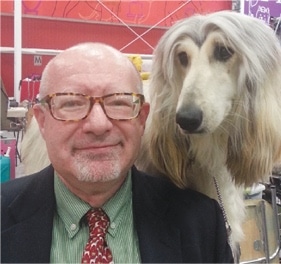
Although Allan Reznik has worn many hats in the dog show world over the past 50 years, he is probably best known as an award-winning journalist and broadcaster. He was the Editor-in-Chief of Dogs in Canada, Dog World, Dog Fancy and Dogs in Review magazines. All four publications received national honors from the Dog Writers Association of America while under his stewardship. Reznik appears regularly on national TV and radio to discuss the dog show sport as well as all aspects of responsible animal ownership. He has bred and shown champion Afghan Hounds, Cavalier King Charles Spaniels and Tibetan Spaniels. He is currently an approved AKC judge of all three breeds, as well as a provisional/permit judge of 11 additional breeds.

Explore the essence of Cavalier movement—a vital aspect often overlooked. Delve into its significance and impact on structure.
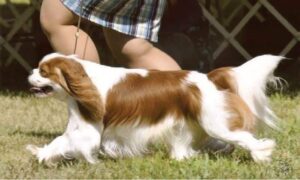
Learn what judges should keep in mind when judging Cavalier King Charles Spaniels, including breed history, appearance, movement, and color.
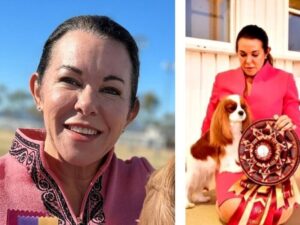
Kelly Fadel is the breeder behind the Charm City Poms. Read about the kennel’s beginnings, the sires, the dams, the puppies, and much more!
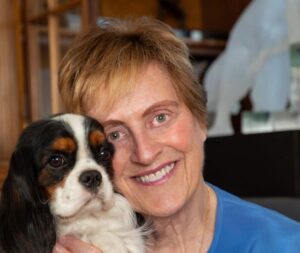
Janet York is the breeder behind Piccadil Cavalier King Charles Spaniels. Read about the kennel’s beginnings, the dogs, see photos, and more!
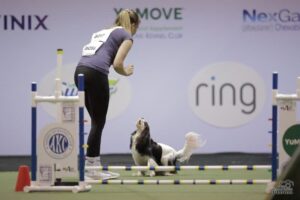
Interview with Charly Teller, handler of “Basil,” the 2022 AKC Agility Invitational Winner in the 12″ height category Junior Excellent Class.
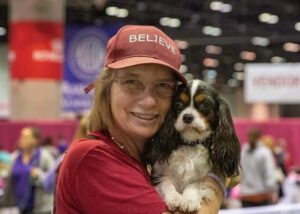
Interview with Antonia Rotelle, handler of “Dot,” the 2022 AKC Agility Invitational Winner in the 8″ height category.
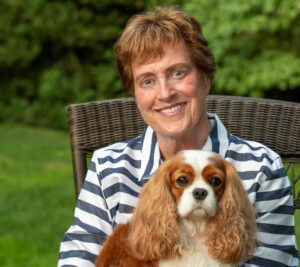
Insights from an Owner Handler, Janet York. Read about her opinions on various topics about dog handling in the modern show ring.
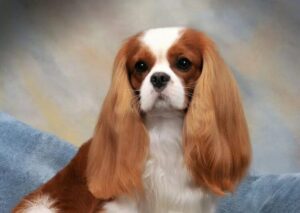
Judging the Cavalier King Charles Spaniel well is a bit like catching a genie in a bottle. Just when you think you’ve “got it right,” up

Explore the essence of Cavalier movement—a vital aspect often overlooked. Delve into its significance and impact on structure.

Learn what judges should keep in mind when judging Cavalier King Charles Spaniels, including breed history, appearance, movement, and color.

Kelly Fadel is the breeder behind the Charm City Poms. Read about the kennel’s beginnings, the sires, the dams, the puppies, and much more!

Janet York is the breeder behind Piccadil Cavalier King Charles Spaniels. Read about the kennel’s beginnings, the dogs, see photos, and more!

Interview with Charly Teller, handler of “Basil,” the 2022 AKC Agility Invitational Winner in the 12″ height category Junior Excellent Class.

Interview with Antonia Rotelle, handler of “Dot,” the 2022 AKC Agility Invitational Winner in the 8″ height category.

Insights from an Owner Handler, Janet York. Read about her opinions on various topics about dog handling in the modern show ring.

Judging the Cavalier King Charles Spaniel well is a bit like catching a genie in a bottle. Just when you think you’ve “got it right,” up
The best way to ensure a long and happy relationship with a purebred dog is to purchase one from a responsible breeder. Not sure where to begin?
Contact the National Parent Club’s Breeder Referral Program, which is listed on the AKC Breeder Referral Contacts page.
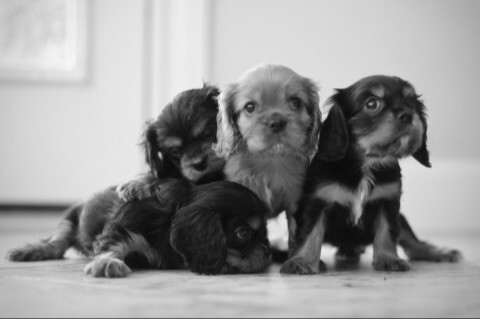

"*" indicates required fields
Showsight Magazine–the world’s most influential purebred dog publication since 1992. Each issue reaches a global audience dedicated to preserving the history and health of purpose bred dogs. Filled with award-winning editorial focused on news and insights from the dog show community, top breeders, handlers, AKC Judges, and more!